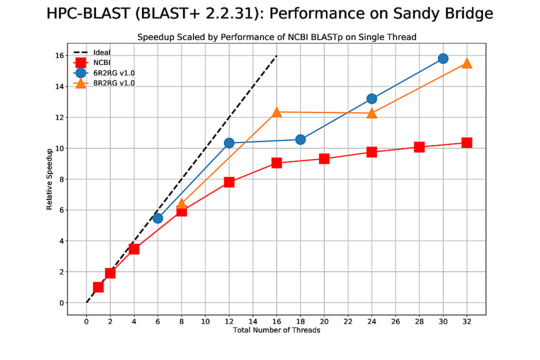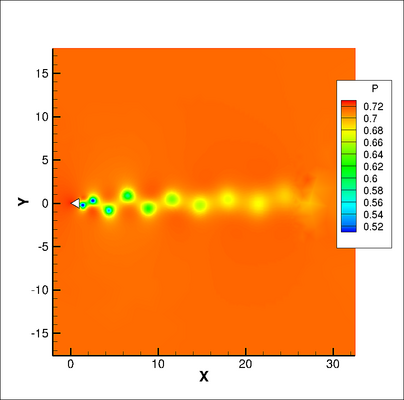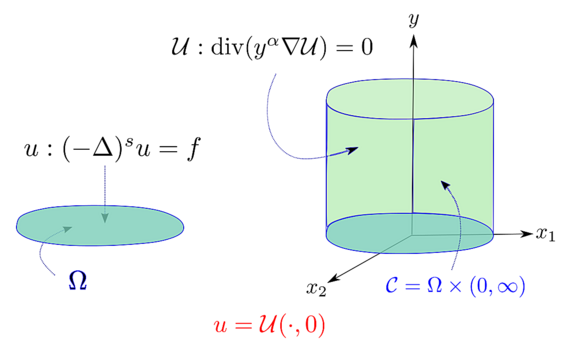HPC-BLAST Project at AACE
I discuss the work on HPC-BLAST.
I discuss the work on HPC-BLAST.
I discuss my Masters research code results. 
I discuss my PhD research.
Published in 45th AIAA Aerospace Sciences Meeting and Exhibit, 2007
Recommended citation: Steve L. Karman Jr., Brent Mitchell, Shane Sawyer, and Justin Whitt. (2007). "Unstructured Grid Solutions of CAWAPI F-16XL by UT SimCenter " 45th AIAA Aerospace Sciences Meeting and Exhibit Paper No. 2007-0681.
Published in 45th AIAA Aerospace Sciences Meeting and Exhibit, 2007
Recommended citation: Kidambi Sreenivas, D. Nichols, Daniel Hyams, Brent Mitchell, Shane Sawyer, Lafayette Taylor and David Whitfield. (2007). "Computational Simulation of Heavy Trucks " 45th AIAA Aerospace Sciences Meeting and Exhibit Paper No. 2007-0681.
Published in 45th AIAA Aerospace Sciences Meeting and Exhibit, 2007
Recommended citation: Kidambi Sreenivas, Brent Mitchell, Shane Sawyer, Steve Karman, Stephen Nichols, and Daniel Hyams. (2007). "Computational Prediction of Forces and Moments for Transport Aircraft " 45th AIAA Aerospace Sciences Meeting and Exhibit Paper No. 2007-0681.
Published in 6th ACM Conference on Bioinformatics, Computational Biology and Health Informatics, 2015
A poster presentation for early HPC-BLAST architecture.
Published in BICoB 2019 : 11th International Conference on Bioinformatics and Computational Biology, 2019
This paper presents improved results of the HPC-BLAST project.
Recommended citation: Shane Sawyer, Mitchel Horton, Chad Burdyshaw, Glenn Brook, and Bhanu Rekapalli. (2019). "HPC-BLAST: distributed BLAST for modern HPC clusters." Proceedings of 11th International Conference.
Download Bibtex
Published in American Geophysical Union, Fall Meeting 2019, 2019
The microbial world primarily consists of taxa that are distantly related to species that have been grown in culture. These taxa are a potential wellspring of undiscovered genomic function, but the quantity of novel functional genes in an organism does not necessarily track the phylogenetic divergence of that organism from cultured lineages. In order to test whether phylogenetically divergent microbes also contain more novel genetic material, we measured the sequence similarity between each gene in approximately 15,000 genomes of bacterial and archaeal isolates, metagenome-assembled genomes, and single-cell genomes, to the most similar gene in the SwissProt database of genes of well-known function. We compared these sequence similarities between predicted proteins to the phylogenetic distance between each organism and its closest cultured relative, allowing us to assess whether uncultured phyla contain more genetic novelty than cultured phyla. A similar analysis allowed us to measure the quantity of genetic novelty within ecosystems. Finally, we measured the typical distance between genes of unknown function within taxa and within environments in order to test whether some phyla or environments contain more, different kinds of genes than others. We will assess whether uncultured phyla contain greater genetic novelty than cultured phyla, in which case uncharacterized organisms may be a source for novel metabolic functions that influence geochemical cycles.
Published in SIAM Conference on Parallel Processing for Scientific Computing 2024, 2024
A poster presentation showcasing my doctoral research.
Published in Accepted, 2024
A manuscript containing the results of my doctoral research.
Recommended citation: Abner J. Salgado and Shane E. Sawyer. (2024). "A Semi-Analytic Diagonalization FEM for the Spectral Fractional Laplacian " Submitted.
Download Paper | Download Bibtex
Published:
These are the slides I presented during the defense of my Masters research and thesis. For this, I analyzed an existing high-order reconstruction algorithm for the finite volume method on unstructured meshes and then implemented it code. I verified the convergence orders and made performance measurements relative to existing methods. The impetus of this project was to study the suitability of the specific reconstruction technique for integration in the department’s flow solver codebase. Of particular interest was whether or not this method could resolve vortical structures while remaining computational tractable.
Published:
These are the slides I presented during a Computational and Applied Mathematics (CAM) seminar for the mathematics department at the University of Tennessee, Knoxville. I provided a brief overview of some relevant topics from a computing side such as computer architecture, mathematics libraries, parallel computing libraries, and code optimization tools.
Published:
These are the slides I presented during the Fall session of the Finite Element Circus. I presented almost all of my doctoral research in a condensed 15 minute presentation.
Published:
These are the slides I presented during the defense of my doctoral research and dissertation. My research involved extending a method that my advisor and his collaborators had introduces for numerically solving the spectral fractional Laplacian. There were two major accomplishments that I contributed. The first was to avoid the problem of numerically computing the eigenvalues of an ODE needed by the method with analytically solving the ODE. This overcomes the stability issue in finding the eigenvalues and eigenfunctions. The second was showing that the method with analytic eigenvalues and eigenfunctions was essentially a quadrature for a Balakrishnan integral formulation of the spectral fractional Laplacian. This discovery was made while demonstrating the convergence rate of the algorithm. I implemented the method in C++ using the deal.ii FEM library and was able to match the theoretical convergence order as well as demonstrate the parallel efficiency of the algorithm.
Undergraduate course, University of Tennessee, Knoxville, Dept. of Mathematics, 2020
This class provides a introduction to calculus and is intended for non-STEM majors. We covered limits, differentiation, and integration as applied to polynomials, exponentials, and logarithms. We discussed applications of the topics to ideas such as optimization. This class also used a flipped modality.
Undergraduate course, University of Tennessee, Knoxville, Dept. of Mathematics, 2020
This class covers concepts such as the real number line, inequalities, functions, and factoring quadratic equations. The department used a flipped modality for instruction in this class.
Undergraduate course, University of Tennessee, Knoxville, Dept. of Mathematics, 2021
This class provides an introduction to probability and statistics without calculus. It is generally intended for non-STEM majors, but many life sciences majors are required to take this class. The topics we cover include discrete probability distributions, counting probabilities, continuous probability distributions, confidence intervals, and hypothesis testing.
Undergraduate course, Pellissippi State Technical Community College, Dept. of Mathematics, 2025
Precalculus for students in University Parallel/College Transfer programs of science, mathematics, engineering or computer science. This course prepares students for Calculus I. Review of algebraic, trigonometric, logarithmic and exponential functions for students with a previous precalculus/trigonometry course. All topics in MATH 1710 and MATH 1720 will be covered in this course. MATH 1710 followed by MATH 1720 is recommended for students with an ACT math score below 23 or no previous precalculus/trigonometry course.